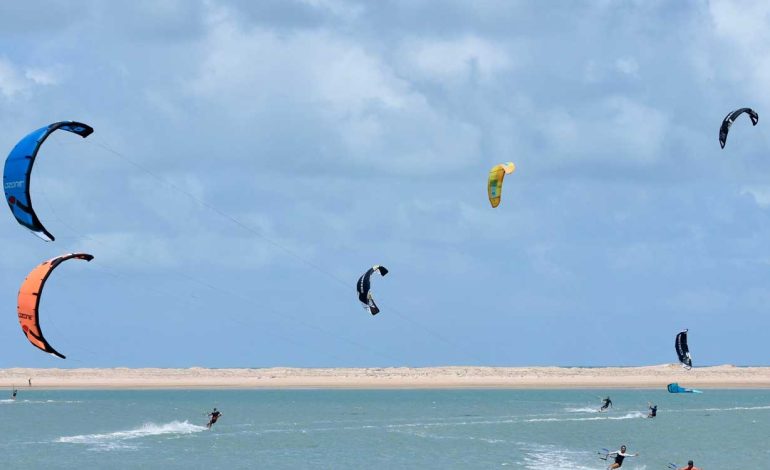The enthusiasts of kitesurfing, often known as riders, have found an ideal location within the Indian Ocean. Kitesurfing is a great success in Mauritius.

A new generation of sportsmen are born. After surfing, windsurfing and snowboarding, kitesurfing is the latest challenge for water-sports addicts. Quiet, and comparatively inexpensive, this open-air sport is gaining increasing popularity. The principle behind kitesurfing is the same as that behind flying a kite. Surfers move through the air and water using wind energy and strong traction. The technique of kitesurfing is simple: the kitesurfer is pulled along upwind by a kite, on a surfboard.
The board
Unlike the windsurfing board, the kiteboard provides no foot grip. It is about the same size as a surfboard (generally about 1.5 metres long and 40 cm wide) but is equipped with foot straps. Its weight ranges from 3 to 5 kilos and, compared with a surfboard, is better adapted to the rider’s weight for jumps as well as upwind sailing.
The lines
There are two systems, 2-line and 4-line systems. Many kitesurfers use a 2-line system for its simplicity. Nonetheless, most riders use a 4-line system. Some manufacturers have used different colours to distinguish the front and brake (back) lines and to make the assembly of the control device easier.
The kite
There are three kinds of kites: inflatable kites with inflatable battens enabling the rider to relaunch from the water after a fall. An alternative, the closed cell foil kite, provides greater power control and enables the rider to go upwind with more comfort. Even then, water relaunch ability varies depending on the kitesurfer’s skill. Although they are very dependable and reasonably high performance, classic graphite framed single skin kites are not especially relaunchable. Kite sizes will vary, depending on the build of the kitesurfer, their skill, the wind, and sea conditions.


